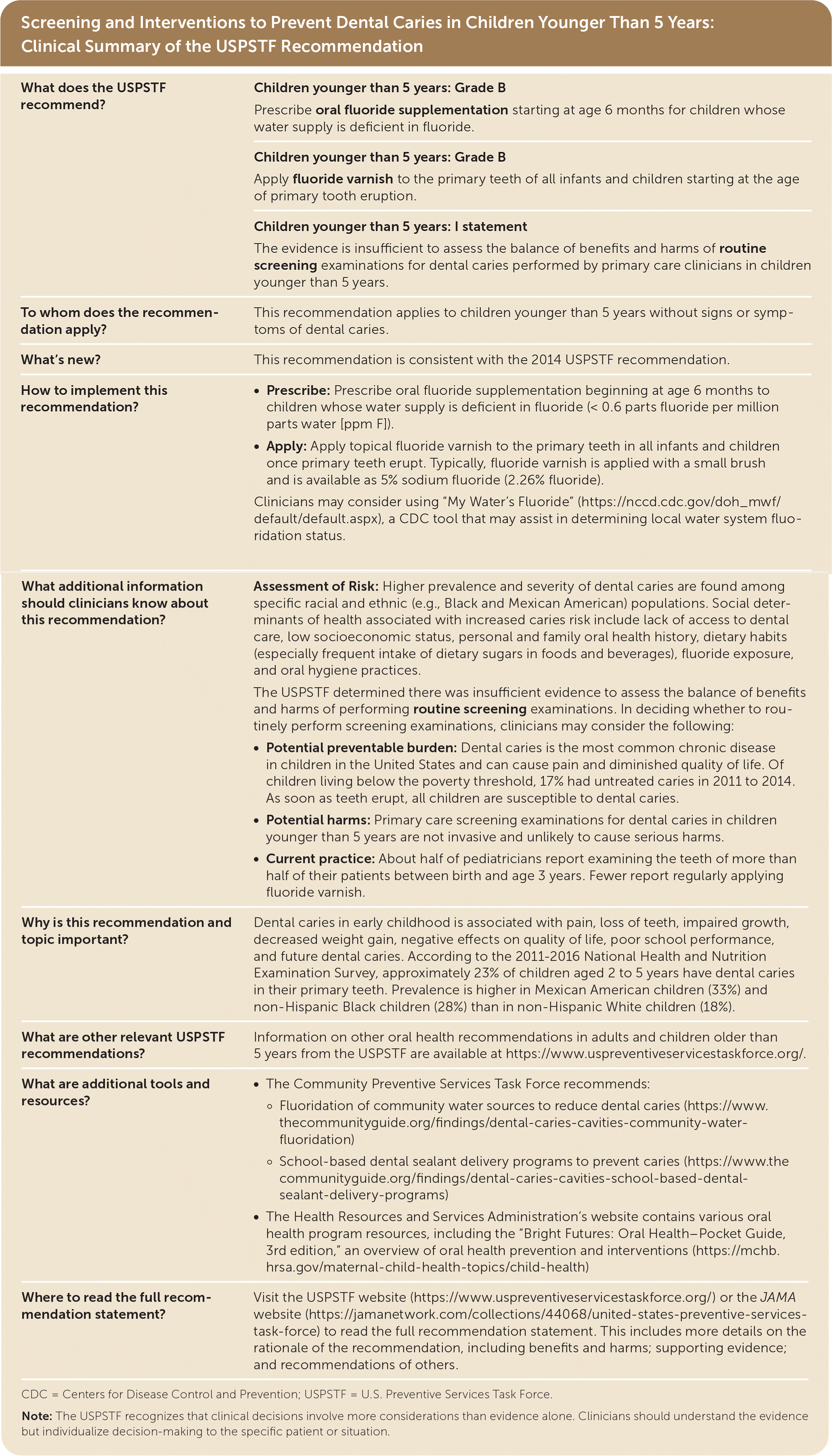
Am Fam Physician. 2022;105(3):online
Related Putting Prevention Into Practice: Screening and Interventions to Prevent Dental Caries in Children Younger Than Five Years
As published by the USPSTF.

| What does the USPSTF recommend? | Children younger than 5 years: Grade B Prescribe oral fluoride supplementation starting at age 6 months for children whose water supply is deficient in fluoride. Children younger than 5 years: Grade B Apply fluoride varnish to the primary teeth of all infants and children starting at the age of primary tooth eruption. Children younger than 5 years: I statement The evidence is insufficient to assess the balance of benefits and harms of routine screening examinations for dental caries performed by primary care clinicians in children younger than 5 years. |
| To whom does the recommendation apply? | This recommendation applies to children younger than 5 years without signs or symptoms of dental caries. |
| What’s new? | This recommendation is consistent with the 2014 USPSTF recommendation. |
| How to implement this recommendation? |
Clinicians may consider using “My Water’s Fluoride” (https://nccd.cdc.gov/doh_mwf/default/default.aspx), a CDC tool that may assist in determining local water system fluoridation status. |
| What additional information should clinicians know about this recommendation? | Assessment of Risk: Higher prevalence and severity of dental caries are found among specific racial and ethnic (e.g., Black and Mexican American) populations. Social determinants of health associated with increased caries risk include lack of access to dental care, low socioeconomic status, personal and family oral health history, dietary habits (especially frequent intake of dietary sugars in foods and beverages), fluoride exposure, and oral hygiene practices. The USPSTF determined there was insufficient evidence to assess the balance of benefits and harms of performing routine screening examinations. In deciding whether to routinely perform screening examinations, clinicians may consider the following:
|
| Why is this recommendation and topic important? | Dental caries in early childhood is associated with pain, loss of teeth, impaired growth, decreased weight gain, negative effects on quality of life, poor school performance, and future dental caries. According to the 2011–2016 National Health and Nutrition Examination Survey, approximately 23% of children aged 2 to 5 years have dental caries in their primary teeth. Prevalence is higher in Mexican American children (33%) and non-Hispanic Black children (28%) than in non-Hispanic White children (18%). |
| What are other relevant USPSTF recommendations? | Information on other oral health recommendations in adults and children older than 5 years from the USPSTF are available at https://www.uspreventiveservicestaskforce.org/. |
| What are additional tools and resources? |
|
| Where to read the full recommendation statement? | Visit the USPSTF website (https://www.uspreventiveservicestaskforce.org/) or the JAMA website (https://jamanetwork.com/collections/44068/united-states-preventive-services-task-force) to read the full recommendation statement. This includes more details on the rationale of the recommendation, including benefits and harms; supporting evidence; and recommendations of others. |
